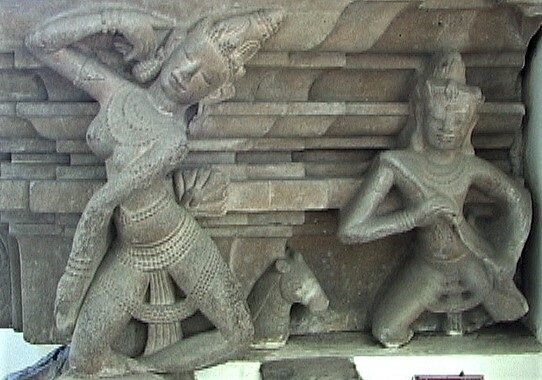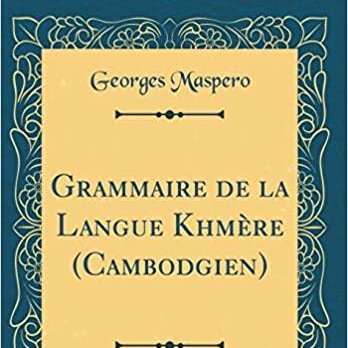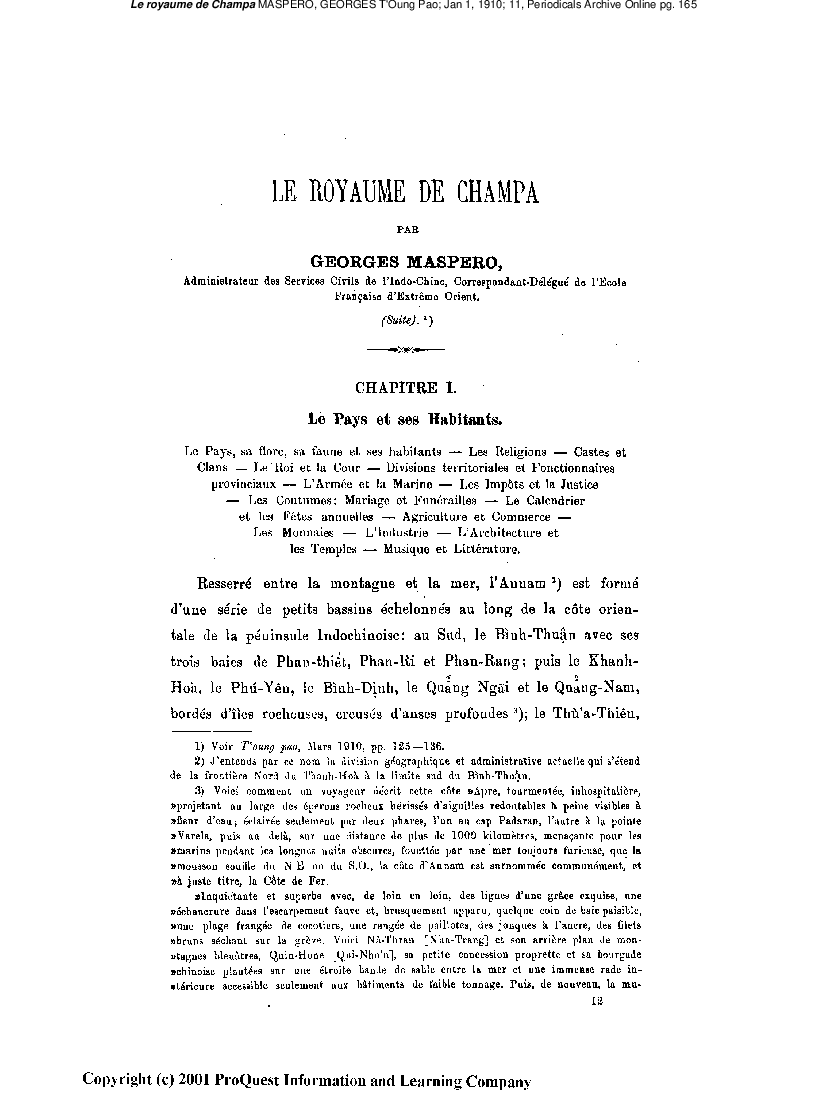Le Royaume de Champa (The Champa Kingdom)
by Georges Maspero
A presentation of the Kingdom of Champa by Georges Maspero, distinguished sinologist and orientalist.

Publication: Chap I from Le royaume de Champa, Paris and Bruxelles, Les Editions Van Oest, 1928, in-8°. vn-278 pp., ill.
Published: 1928
Author: Georges Maspero
Pages: 56
Language : French
pdf 2.2 MB
A foe and commercial partner of the Khmer Empire, the Champa Kingdom is here described by the eminent Orientalist Georges Maspero, who extensively studied architectural and scriptural remains in Cambodia and Vietnam during the decades 1910 and 1920.
It is now accepted that Trà Kiệu village in Duy Xuyên, Quảng Nam Province, Vietnam, was the first capital city of the Hindu Champa Kingdom, then named Simhapura, from the 4th century to the 8th century CE. Nowadays, nothing remains of the ancient city except the rectangular ramparts.
The author explores many aspects of the Champa history that are still subject to speculations, such as the Islamization of the Kingdom under Malay influence, and the intricated interconnections with the pre-Angkorean and Angkorean sovereigns.
Regarding the name itself, the author notes: “Ce nom de Campa est, en sanscrit, celui d’un arbre et d’une fleur généralement blanche, très odorante. Il désignait, dans l’Inde Ancienne, un Royaume qui occupait l’emplacement du district actuel de Bbagalpur. La première mention qni en soit faite comme nom de l’Etat qui nous occupe se trouve sur la stèle de Çambhuvarman [Mi-So’n, mont A., 73, skt., date illisible, Finot 206, IV 917 u], le Fan Fan-Tche des Chinois, qui vivait en 629 AD; une inscription de 658 AD. [Mt-So’o, mont Er., 116, stele. skt. 579ç. Finot IV 918m] qualifie le roi Vikrantavarman I [Prakaçadharmaj de “Çri Campapuraparameçvara”, Souverain Seigneur de la ville de Campa; enfin un texte khmèr de la même époqne [Kdei An (Ang Chumnik) Ba-Phnom, 53, stèle, skt, 5899, 667 AD. C. 1. 64) nous montre Sirp.hadeva, ministre de Mahendravarman, envoyé en ambassade auprès du souverain de Campa [MASPERO Empire Khmer 26]. Ce nom de Campa, que l’on croit pouvoir retrouver dans le Çanf des Arabes et, plus problématiquement dans le Zabai de Ptolémé, a été écrit de façons les plus différentes: Cyamba [Marco-Polo], Campe [Oiloric de Pordenone], Tchampa [Aymonier], Campa [Bergaigne] etc…J’ai adopté la forme Champa à laquelle s’est’arreté Finot comme transcription la plus exacte, phonétiquement, du mot sanscrit. Les Chinois ont donné au Champa les noms de Lin-Yi, Houan Wang et Tchen-Tch’eng; le dernier, seul, pourrait être la transcription du nom sanscrit. Les textes annamites nous fournissent les noms de Lam Ap et Chiêm Thành.”
Read Louis Finot’s recension of Maspero’s book in 1928 (BEFEO).
Photo: An apasara on a Champa bas-relief, Tra Kieu (modern Vietnam)
Tags: Champa, Cham civilization, Funan, Khmer Empire
About the Author

Georges Maspero
René Gaston Georges Maspero (21 August 1872 – 21 September 1942) was a French sinologist and a civil officer with the French Protectorate in Cambodia.
He was the son of egyptologist Gaston Maspero and half-brother of sinologist Henri Maspero.
A colonial governor of French Indochina, he was appointed Resident-Mayor of Haiphong, then acting Resident Superior (15 April 1920 – 6 December 1920) of Cambodia. He was among the founders of the École française d’Extrême-Orient (EFEO).
His daughter, Eveline Porée-Maspero, has extensively studied Khmer culture and Cambodian mores. She wrote his obituary in EFEO Bulletin, here.

